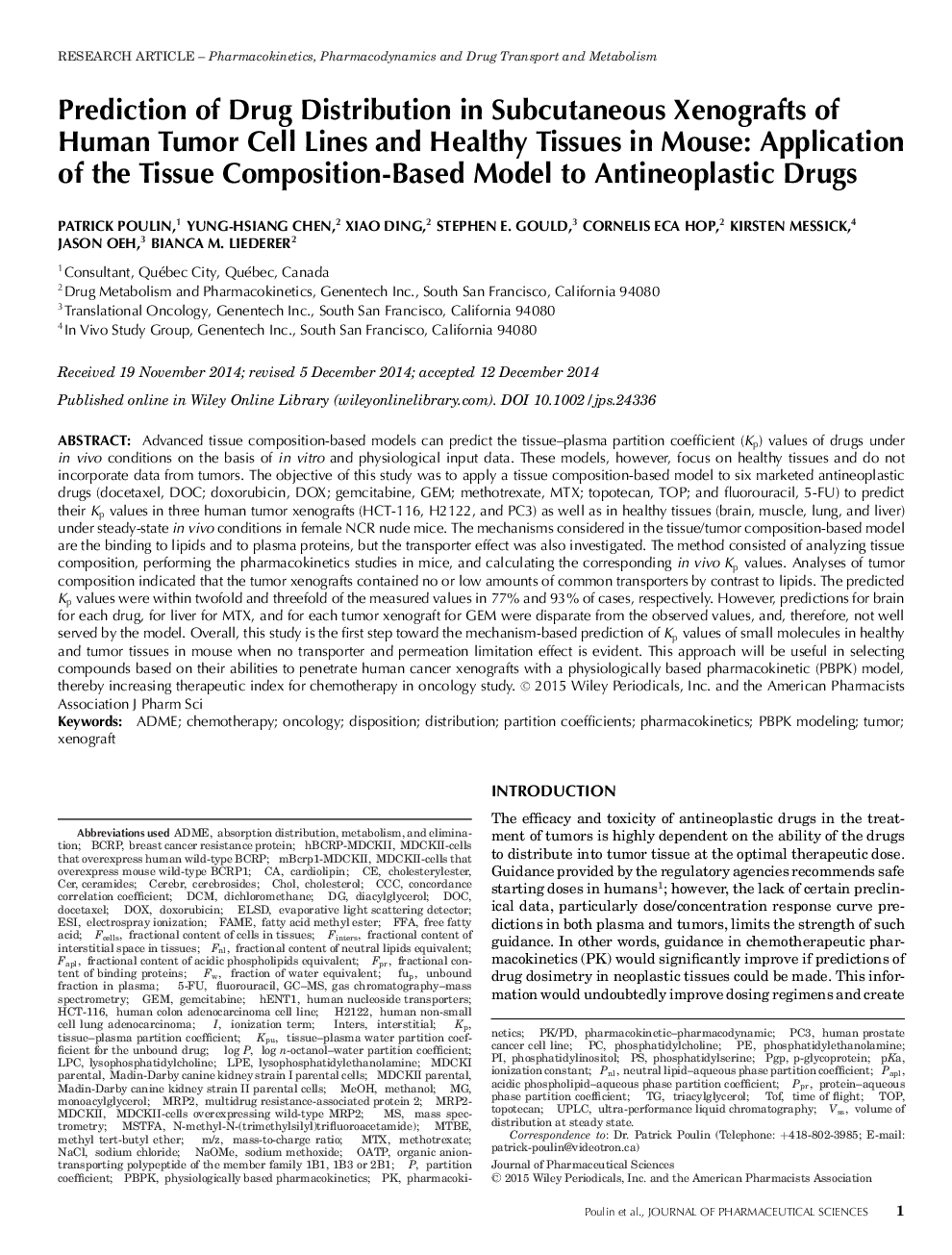| کد مقاله | کد نشریه | سال انتشار | مقاله انگلیسی | نسخه تمام متن |
|---|---|---|---|---|
| 10162142 | 1114317 | 2015 | 14 صفحه PDF | دانلود رایگان |
عنوان انگلیسی مقاله ISI
Prediction of Drug Distribution in Subcutaneous Xenografts of Human Tumor Cell Lines and Healthy Tissues in Mouse: Application of the Tissue Composition-Based Model to Antineoplastic Drugs
دانلود مقاله + سفارش ترجمه
دانلود مقاله ISI انگلیسی
رایگان برای ایرانیان
کلمات کلیدی
موضوعات مرتبط
علوم پزشکی و سلامت
داروسازی، سم شناسی و علوم دارویی
اکتشاف دارویی
پیش نمایش صفحه اول مقاله

چکیده انگلیسی
Advanced tissue composition-based models can predict the tissue-plasma partition coefficient (Kp) values of drugs under in vivo conditions on the basis of in vitro and physiological input data. These models, however, focus on healthy tissues and do not incorporate data from tumors. The objective of this study was to apply a tissue composition-based model to six marketed antineoplastic drugs (docetaxel, DOC; doxorubicin, DOX; gemcitabine, GEM; methotrexate, MTX; topotecan, TOP; and fluorouracil, 5-FU) to predict their Kp values in three human tumor xenografts (HCT-116, H2122, and PC3) as well as in healthy tissues (brain, muscle, lung, and liver) under steady-state in vivo conditions in female NCR nude mice. The mechanisms considered in the tissue/tumor composition-based model are the binding to lipids and to plasma proteins, but the transporter effect was also investigated. The method consisted of analyzing tissue composition, performing the pharmacokinetics studies in mice, and calculating the corresponding in vivo Kp values. Analyses of tumor composition indicated that the tumor xenografts contained no or low amounts of common transporters by contrast to lipids. The predicted Kp values were within twofold and threefold of the measured values in 77% and 93% of cases, respectively. However, predictions for brain for each drug, for liver for MTX, and for each tumor xenograft for GEM were disparate from the observed values, and, therefore, not well served by the model. Overall, this study is the first step toward the mechanism-based prediction of Kp values of small molecules in healthy and tumor tissues in mouse when no transporter and permeation limitation effect is evident. This approach will be useful in selecting compounds based on their abilities to penetrate human cancer xenografts with a physiologically based pharmacokinetic (PBPK) model, thereby increasing therapeutic index for chemotherapy in oncology study.
ناشر
Database: Elsevier - ScienceDirect (ساینس دایرکت)
Journal: Journal of Pharmaceutical Sciences - Volume 104, Issue 4, April 2015, Pages 1508-1521
Journal: Journal of Pharmaceutical Sciences - Volume 104, Issue 4, April 2015, Pages 1508-1521
نویسندگان
Patrick Poulin, Yung-Hsiang Chen, Xiao Ding, Stephen E. Gould, Cornelis Eca Hop, Kirsten Messick, Jason Oeh, Bianca M. Liederer,